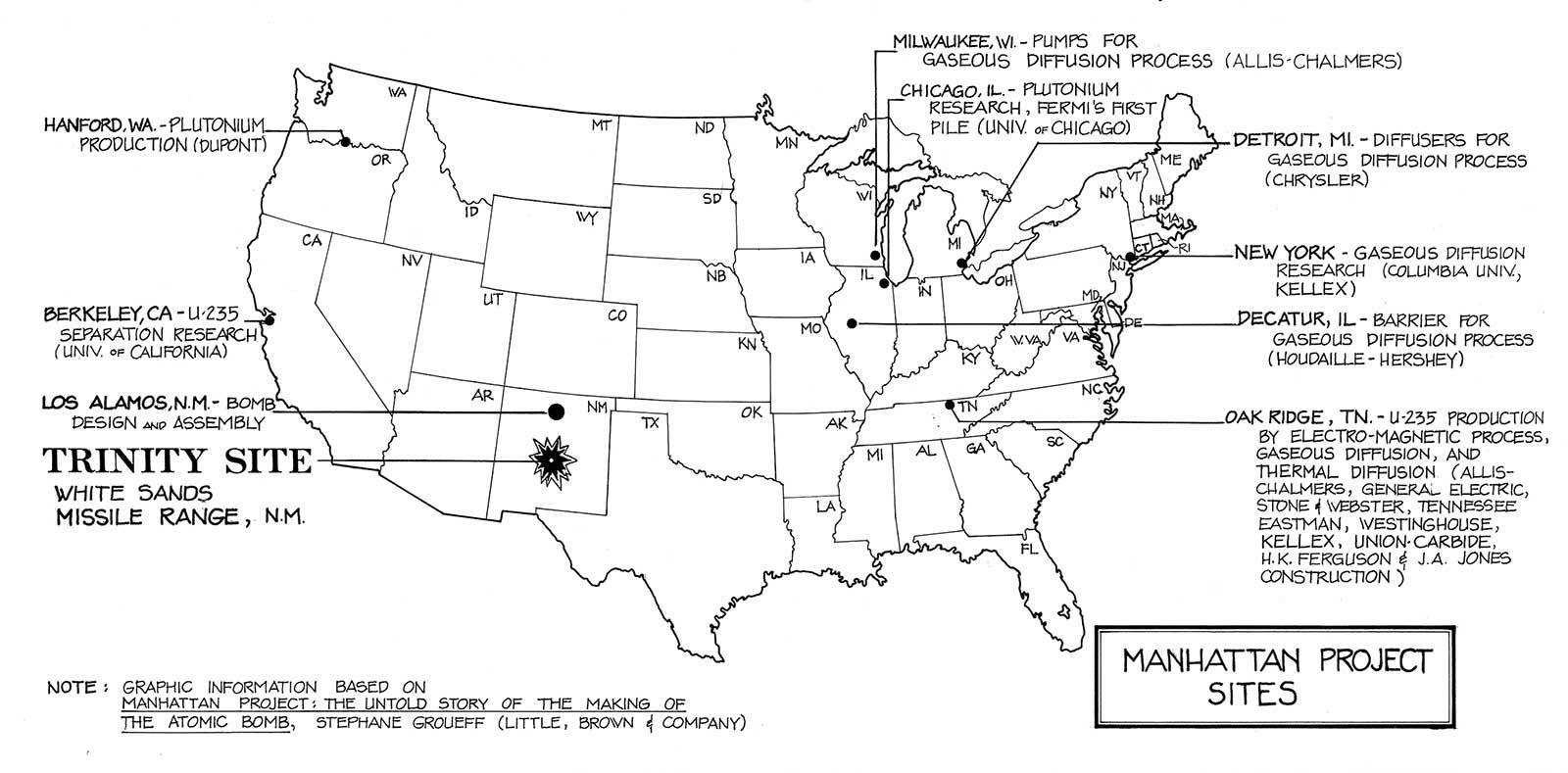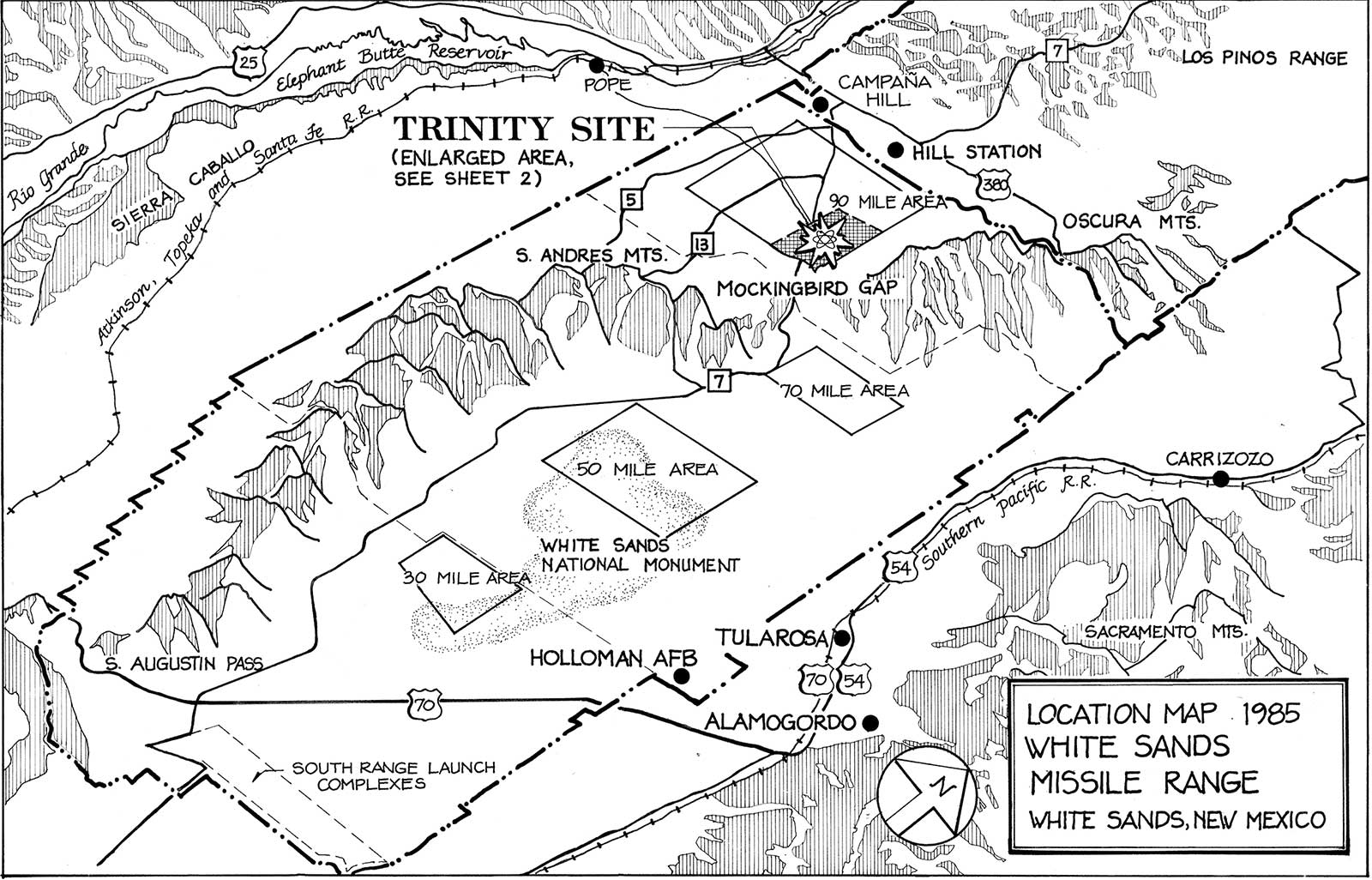Trinty Site
White Sands Missile Range, New Mexico
The world's first atomic bomb was detonated at Trinity site in the southern New Mexico desert at 5:29:45 a.m. on July 16, 1945. The detonation was the key test of a top secret effort, code named the Manhattan Project, to build and deploy atomic weapons in time to affect the outcome of World War II. Carried out by the army under the direction of General Leslie R. Groves, it was the largest and boldest combined scientific and industrial effort ever undertaken.

The project was conceived in 1939 when Albert Einstein wrote to President Franklin D. Roosevelt about the need to develop nuclear weapons before the Germans, who were known to have begun research on an atomic bomb. The atom had been split for the first time in a Berlin laboratory in 1938, and the principle of nuclear fission was generally understood by the world's scientific community. Atomic research was initially limited in the United States, but under the auspices of the Manhattan Project, Enrico Fermi and his colleagues at the University of Chicago's metallurgical laboratory produced the first sustained nuclear reaction in December 1942.
While the construction of the first atomic bomb was considered scientifically feasible, the technology for producing fissionable material on anything greater than a laboratory scale was unknown, and methods for using the material to make a bomb were largely unexplored by American scientists. Two fissionable materials for the bomb were considered: Uranium-235 and Plutonium-239. Research on separating the isotope U-235 from the naturally occurring element U-238 was carried out by scientists at the University of California at Berkeley, at Columbia University, and at a specially formed secret organization in New York City called Kellex. Plutonium research was conducted at the University of Chicago.
In 1943 and 1944, a huge facility for the separation of U-235 was constructed at Oak Ridge, Tennessee. It had two sites, one for separation by the electromagnetic process, and one for separation by gaseous (and later thermal) diffusion. The Oak Ridge facility covered 54,000 acres and, by 1945, employed 30,000 people. Concurrently, another giant industrial complex was built at Hanford, Washington for plutonium production. It occupied a 600-square-mile site and employed 45,000 people.
Meanwhile, a secret scientific laboratory under the direction of J. Robert Oppenheimer was established at Los Alamos, New Mexico to design and assemble the actual uranium-and plutonium-based atomic weapons. The laboratory site was selected in late 1942 and the first contingent of scientists arrived in March 1943. By June, 250 scientific personnel were at work on the physical, chemical, and metallurgical aspects of the bomb’s development. Two dozen scientists who had been performing related work in Britain, including Neil Bohr, later joined forces with los alamos under a secret agreement between Roosevelt and Churchill. At war's end, the workforce at Los Alamos numbered over 2500.
By mid-1944 it was evident that the plutonium bomb would have to be tested before being used in combat. There were still too many unknowns about the implosion device to take the chance of it falling, unexploded, into enemy hands. Further, an atomic test would provide quantitative data on a nuclear explosion's heat, blast, earth shock, radiation, and physical characteristics that could be collected in no other way. The site for such a test had to be isolated, have good weather conditions and relatively level terrain, and be within a day's drive from Los Alamos. Eight sites were examined, and in September 1944 an 18 by 24 mile section of the northwest corner of the Second Air Force's Alamogordo bombing range was selected. The area was flat, desolate and semi-arid. Oppenheimer gave the site the code name "Trinity".
